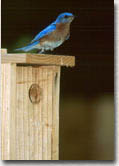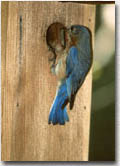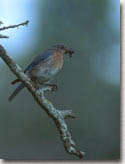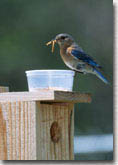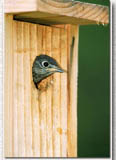
|
The entire family would gather at our bird bath toward the end of the day for a drink and a dip. The Bluebird population has grown considerably in the last decade thanks to a strong conservation effort. With natural habitat decreasing, more and more people are providing them nest boxes. It's been a richly rewarding experience for us just to be able to watch and photograph these beautiful birds. If you would like additional, more extensive information on raising Bluebirds, The North American Bluebird Society is worth a visit. |
Home About this site My Links Photo Gallery Featured guest page
